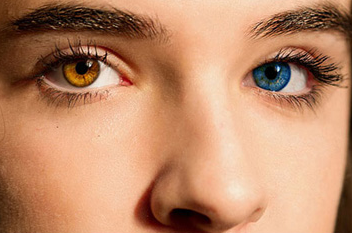La hipoacusia en casos con síndrome de Waardenburg
Palabras clave:
Síndrome de Waardenburg/epidemiología, Pérdida auditiva.Resumen
Introducción: la hipoacusia neurosensorial es uno de los síntomas principales del síndrome de Waardenburg. Se ha detectado en el municipio Sandino en Pinar del Río una familia con 26 individuos vivos portadores de esta entidad genética.
Objetivo: Caracterizar la hipoacusia en las personas afectadas por síndrome de Waardenburg
Material y método: se realizó un estudio descriptivo, longitudinal y prospectivo a las personas afectadas por hipoacusia pertenecientes a una familia con síndrome de Waardenburg del municipio Sandino.
Resultados: la presente investigación incorpora aspectos importantes de la hipoacusia en los casos afectados por síndrome de Waardenburg, no descritos anteriormente, que ofrece la posibilidad de mostrarlos de una manera novedosa para enriquecer y actualizar el conocimiento de esta entidad.
Conclusiones: la hipoacusia neurosensorial en los casos analizados presenta una localización coclear, aunque en algunos casos no se descarta lesión retrococlear asociada y su intensidad puede incrementarse por la exposición al ruido.
Descargas
Citas
1.Carvajal Bermejo MJ, Bermejo Guerra S. Hipoacusia genética en niños atendidos en el Centro Auditivo de La Habana 2006-2011. Rev Cubana Otorrinolaringología Cirugía Cabeza y Cuello. 2014; 2 (1): 27-45. En http://www.revotorrino.sld.cu/index.php/otl/article/view/39 Acceso, 15-07-15
2. Santana Hernández E E, Tamayo Chang V J. .Síndrome Waardenburg. Presentación de una familia afectada. Gaceta Médica Espirituana, Vol 17, No 3 (2015). http://scielo.sld.cu/scielo.php?pid=S1608-89212015000300020&script=sci_arttext&tlng=pt Acceso: 26-12-15
3. Teixeira Naia MJ. Síndrome de Waardenbur: uma nova terapia [ Tesis]. Covilha: Ciencias Biomédicas [Internet].; 2012. En; https://www.researchgate.net/profile/Maria_Naia/publication/277191527_Sndrome_de_Waardenburg/links/55644eb808ae9963a11f245c.pdf Acceso 24-10-15.
4. Modjtahedi BS, Alikhan A, Maibach HI, Schwab IR. Diseases of periocular hair. Rev Epub [internet]. 2011 sep- oct [citado 3 Octubre 2015]; 56(5): [aprox. 16 p.]. Disponible en: http://www.sciencedirect.com/science/article/pii/S003962571100035X
5. Fernández RM, Núñez-Ramos R, Enguix-Riego MV, Román-Rodríguez FJ, Galán-Gómez E, et al. Waardenburg syndrome type 4: report of two new cases caused by SOX10 mutations in Spain. Am J Med Genet A [Internet]. 2014 Feb [cited: 2015 Ene];164A(2):542-7. Available from: http://onlinelibrary.wiley.com/doi/10.1002/ajmg.a.36302/full.
6. Castiglione A, Busi M, Martini A. Hearing, Balance and Communication. Rev Healthcare. 2015; 13(2): 146-59.
7. Farrer LA, Grundfast KM, Amos J, Arnos KS, Asher JH, Beighton P, et al. Waardenburg syndrome (WS) type I is caused by defects at multiple loci, one of which is near ALPP on chromosome 2: first report of the WS consortium. Rev Am J Hum Genet [internet]. 1992 [citado 3 Octubre 2015]; 50: [aprox. 11 p.]. Disponible en: http://www.ncbi.nlm.nih.gov/pmc/articles/PMC1682585/
8. Fang Wu T, Li Yao Y, Lu La I, Chen Lai C, Lun Lin P, Ming Yang W. Loading of PAX3 to Mitotic Chromosomes Is Mediated by Arginine Methylation and Associated with Waardenburg Syndrome. Rev Journal of Biological Chemistry [internet]. 2015 ago [citado 3 Octubre 2015]; 290(33): [aprox. 6 p.]. Disponible en: https://www.jbc.org/content/290/33/20556.full
9. Imperato PJ, Imperato GH. Clinical Manifestations of Waardenburg Syndrome in a Male Adolescent in Mali, West Africa. J Community Health [Internet]. 2015 Feb [cited Ene 2015] ;40(1):103-9. Available from: http://link.springer.com/article/10.1007/s10900-014-9942-7/fulltext.html.
10. Wildhardt G, Zirn B, Graul-Neumann LM, Wechtenbruch J, Suckfüll M, Buske A, et al. Spectrum of novel mutations found in Waardenburg syndrome types 1 and 2: implications for molecular genetic diagnostics. BMJ Open [Internet]. 2013 Mar 18 [cited: 2015 Ene]; 3: e001917. Available from: http://bmjopen.bmj.com/content/3/3/e001917.full
11. Zaman A, Capper R, Daddoo W. Waardenburg syndrome: more common than you think. Rev Clin Otolaryngol. 2015; 40(1):44-8. En: http://onlinelibrary.wiley.com/doi/10.1111/coa.12312/epdf . Acceso 21-01-16
12. Llalliré JC, Young Park K, Passarelli M, Petuaud G, Raffo G. Sindrome de Waardenburg. Arch Oftal. B. Aires 2010; 81(2): 59- 61. En: http://www.sao.org.ar/index.php/archivos-de-oftalmologia/ediciones-anteriores/59-publicaciones/archivos-de-oftalmologia/ediciones-anteriores/volumen-81-numero-02/211-sindrome-de-waardenburg Acceso 15-04-2015
13. Reis de Oliveira GH, Diniz Freire AF, Rodrigues Magalhães LM. Síndrome de Waardenburg: relato de casos. Rev Bras Clin Med. 2012 may- jun;10(3):246-8 en: http://files.bvs.br/upload/S/1679-1010/2012/v10n3/a2876.pdf Acceso: 15-04-15
14. Hocsman E, Clara M, Intaschi MJ, Saldaña S. Implante coclear en síndrome de Waardenburg: nuestra experiencia. Rev Faso. 2015; 22(2): 28.Disponible en: http://www.google.com.cu/url?sa=t&rct=j&q=&esrc=s&source=web&cd=1&cad=rja&uact=8&ved=0ahUKEwjovfrxuuvKAhXDtIMKHfRbBYwQFgghMAA&url=http%3A%2F%2Fwww.faso.org.ar%2Frevistas%2F2015%2F2%2F1.pdf&usg=AFQjCNG57BlDeaPNo5RuIOFPxskosPRscw.
15. Castro Pérez F. Sanabria Negrín J G, Menéndez Gracia R, Iviricu Tielves RJ, Santana Oruña J. Color del iris e hipoacusia en el Síndrome de Waardenburg: Pinar del Río, Cuba. Rev. de Ciencias Médicas. junio 2012; 16(3). http://publicaciones.pri.sld.cu/index.php?option=com_content&task=view&id=35&Itemid=54

Publicado
Cómo citar
Número
Sección
Licencia
Aquellos autores/as que tengan publicaciones con esta revista, aceptan los términos siguientes:- Los autores/as conservarán sus derechos de autor y garantizarán a la revista el derecho de primera publicación de su obra, el cuál estará simultáneamente sujeto a la Licencia de reconocimiento de Creative Commons que permite a terceros compartir la obra siempre que se indique su autor y su primera publicación esta revista.
- Los autores/as podrán adoptar otros acuerdos de licencia no exclusiva de distribución de la versión de la obra publicada (p. ej.: depositarla en un archivo telemático institucional o publicarla en un volumen monográfico) siempre que se indique la publicación inicial en esta revista.
- Se permite y recomienda a los autores/as difundir su obra a través de Internet (p. ej.: en archivos telemáticos institucionales o en su página web) antes y durante el proceso de envío, lo cual puede producir intercambios interesantes y aumentar las citas de la obra publicada. (Véase El efecto del acceso abierto).


